I met Vincent for the first time end 2017. I´ve had the honor to be the first outsider ever to be allowed into Beneteau´s „secret“ special shipbuilding premises in Nantes and publish pictures from inside. Unheard of at that time: It was the hot launching phase of their then newest racing boat, the Figaro 3. Gianguido Girotti showed me around, by chance, it happened that Vincent Lauriot-Prevost was there as well. I don´t know if this was planned, probably not, but I can still remember very vividly how humbled I was and how excited the whole tour became. Because: Getting a thorough factory tour by the very architect is indeed something special.

Apart from the technically amazing facts of the boat, I remember Vincent as being very accessible, open and talkative. He was also very funny and he made me feel welcome, appreciated. Since then I followed the works of VPLP design bureau closely. Which is something you couldn´t be prevented from as this bureau is involved in both high-class racing projects and the design of production yachts, like the Excess catamarans for example. The last time I contacted Vincent was in December last year when I asked him about VPLPs IMOCA foil design. He transferred me to Quentin Lucet, as he was the expert, but a little subclause in his answer puzzled me: „I retired from VPLP.“ Quite a shock! So here we are:
Talking to Vincent about the beginning, the high-time and his retirement from VPLP
Lars Reisberg | NO FRILLS SAILING: „Vincent, your last email was a bit of a shock to me, when you told me that you did indeed left VPLP from „active duty“ – how did it feel to stop your life as a professional naval architect?“
Vincent Lauriot-Prevost | VPLP: „Oh, sorry to hear, Lars! Well, Marc (referring to his friend and co-founder Marc Van Peteghem) and me have signed a support contract with the buyers of VPLP actually. It is still running. So that means that we both are still an active part of the Management Committee, attending meetings and assisting them when requested. So, I am not that completely retired, if you will. The new team is now driven by six VPLP-collaborators, including naval architects and engineers.“
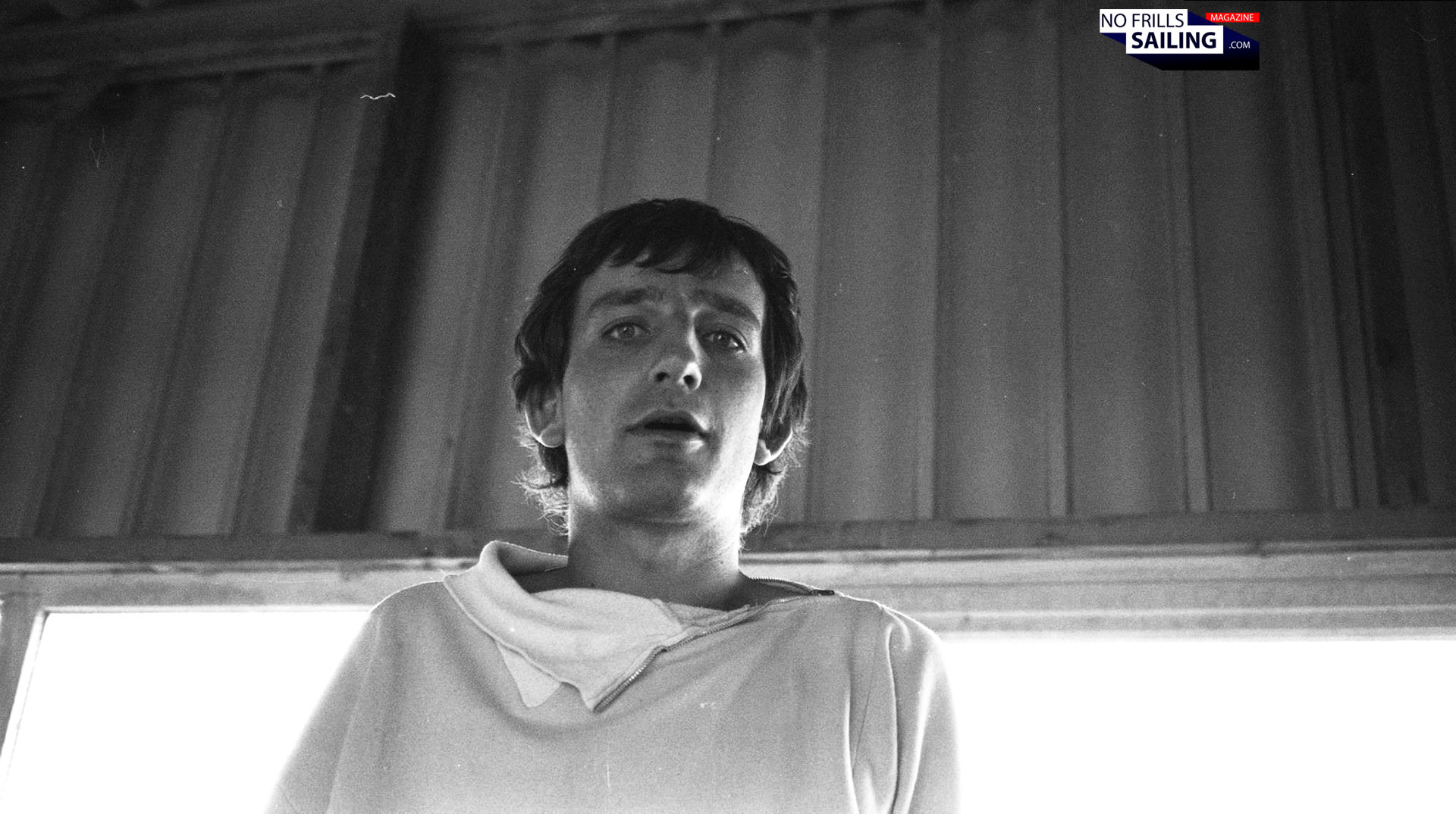
Lars Reisberg | NO FRILLS SAILING: „That´s good to hear. I guess, it´s hard to completely stop working after a life for boats like yours. Let´s have a quick look back on your career. When and why did you become a naval architect in the first place? What have been the catalysts? What drove you to design boats?“
Vincent Lauriot-Prevost: „Well, I think this goes back as far as to my early childhood. My family had a house in North Brittany, in Saint Cast le Guildo, north of Rennes, where I used to spend all my holidays. Both my grand parents owned and sailed a Cormoran. And old wooden boat, gaff-rigged, very small. Just 15 feet – but, with that boat I learned my first tacks and gybes. Good times. Becoming older and growing, they increased the boat size to 20 feet. With these boats we coud do longer cruises, venturing out into the English Channel, rounding the Channel Islands and even reach the South coast of England. I guess, I was connected to boats, sailing and the sea ever since.“

Lars Reisberg | NO FRILLS SAILING: „You decided to study. Where and maybe with whom did you become a naval architect, who was source of inspiration for you?“
Vincent Lauriot-Prevost: „As a young man I went to England. The name was the „Southampton College of Higher Education“ at that time, now the „Solent University“. It was there when I met Marc Van Peteghem right on the first day. We became friends, studied together for the following three years. The rest, well, is history. Asking for any inspiration, mine cam emainly from the multihull world. Ignited by a training course in Ramsgate at the Derek Kelsall boatyard actually. There I helped out with the preparation of a Val 38 feet trimaran, the same type as Mike Birch´s famous OLYMPUS, designed by Dick Newick. He by then was preparing for the Transat en double. It was back in 1979, 46 years ago. This has been such a rich occasion to learn, to discover and to get into this whole new world of sailing.“

Lars Reisberg | NO FRILLS SAILING: „Having become a boat designer eventually, what did you wanted to do differently in yachting? What defined your strive to develop your very own signature style?“
Vincent Lauriot-Prevost: „As said, I started within the multihull world. Back then it was a time of real freedom, at least that´s what it felt for me. The only boundaries we´ve had where dictated by physical constraints. So we were able to really focus on seeking pure performance. You see, at that time, the IOR monohull-designs were mainly dominated by the best of the best. people like Bruce Farr, Doug Peterson and sadly recently deceased Jean-Marie Finot. It was a world that appeared almost impenetrable for young architects like us. Also, what I didn´t like so much was the fact that it was dictated by „the rule“, mathematical equations added to the pure physical balance of yacht design, thus constraining the game into a very narrow bracket. We wanted to be free from that.“
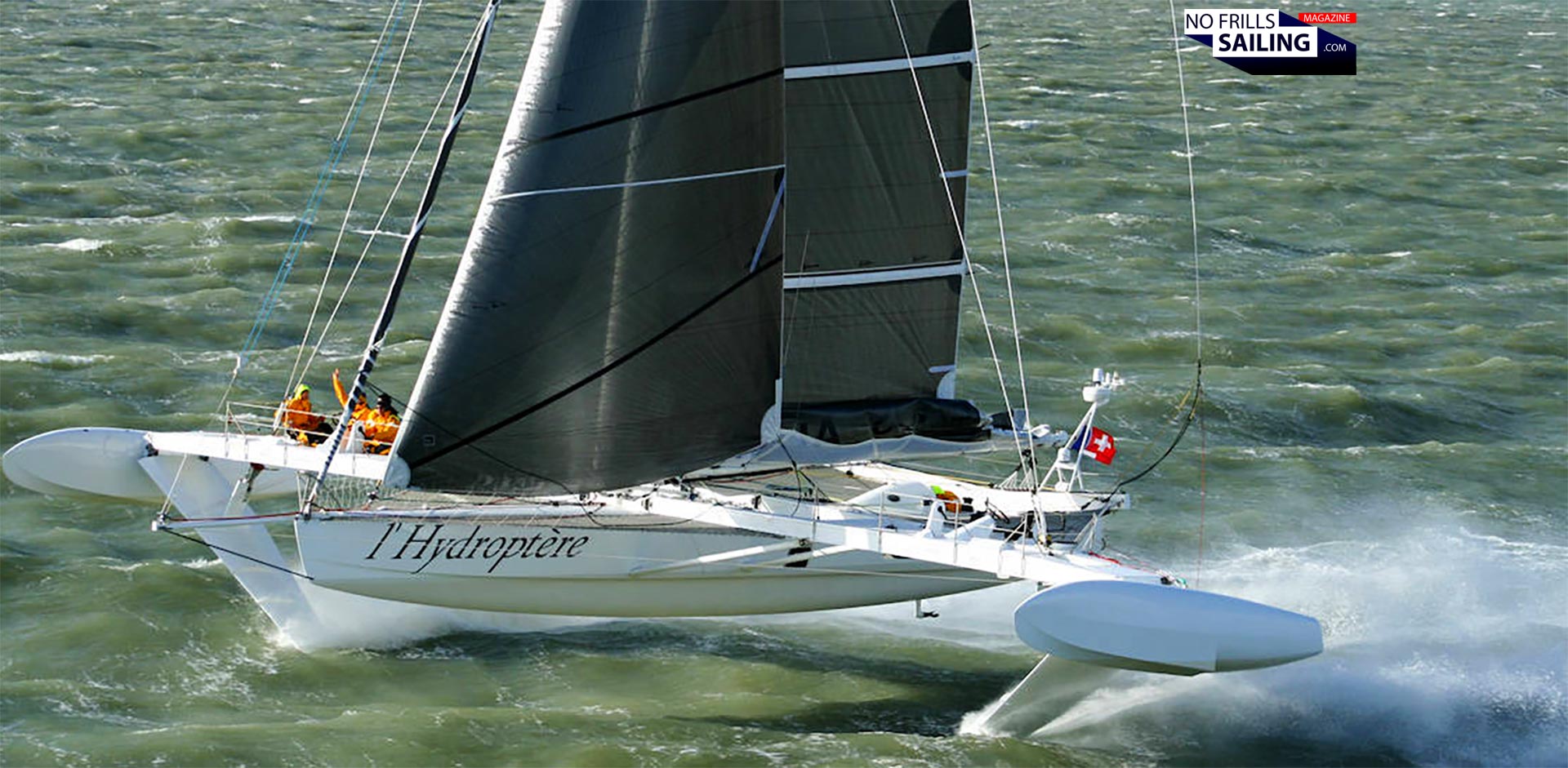
Lars Reisberg | NO FRILLS SAILING: „What´s your story with Marc? When did you decided to start your own design bureau, VPLP?“
Vincent Lauriot-Prevost: „Well, as I said, I met Marc right on first day of college. We then shared our rooms in the same house, we went to the same training course in Ramsgate, which was at the beginning of the third year. At the end of this stage, we both decided together that we wouldn´t come back to the college to obtain our diploma. We rather started a proper job, by then, each on our own. It was three years later when Marc had the opportunity of making a first design of a 50 feet foiler racing trimaran. The first contract he signed. My phone rang as he did call me to join him for a first collaboration. It ended with a success. The boat we did had been stirred some interest among some famous offshore sailors, like Olivier de Kersauson in La Trinité sur Mer. So, we decided to continue this adventure and create a company. VPLP design studio was founded in 1984, 41 years ago.“

Lars Reisberg | NO FRILLS SAILING: „Tell us about the first years in VPLP: How was it like to „sell“ your capabilities to clients? Who have been your first clients and projects and what comes into your mind thinking back of those early years?“
Vincent Lauriot-Prevost: „It was a time, those Eighties, when general and commercial interest in offshore sailing began growing. Also in the multihull world. Also, as the Route du Rhum was created, it became a race that had no limits whatsoever for the participating boats. When Mike Birch won the first ever edition of this race in 1978 with his small 38-footer, he was beating monohulls which were twice as big. You see, at that time, the concept of seeking maximum offshore speed was totally unheard of. Boats were still very classic, conventional. This „viginity“, let´s call it, was valid for both the boat types, like catamarans, trimarans and foilers, but also in terms of the materials. Everything was still kind of un- or under-developed: Foam core, Balsa, honeycomb. Kevlar, carbon fibers, West System or even today´s standards like glass fiber, epoxy and polyester resin. I mean, it was all just starting. This meant that we could start at the same level of almost neophyte knowledge, along the experienced designers which were our competitors. That is where we understood the strength of collaboration with aeronautic and spatial engineers, which was a good step forward.“
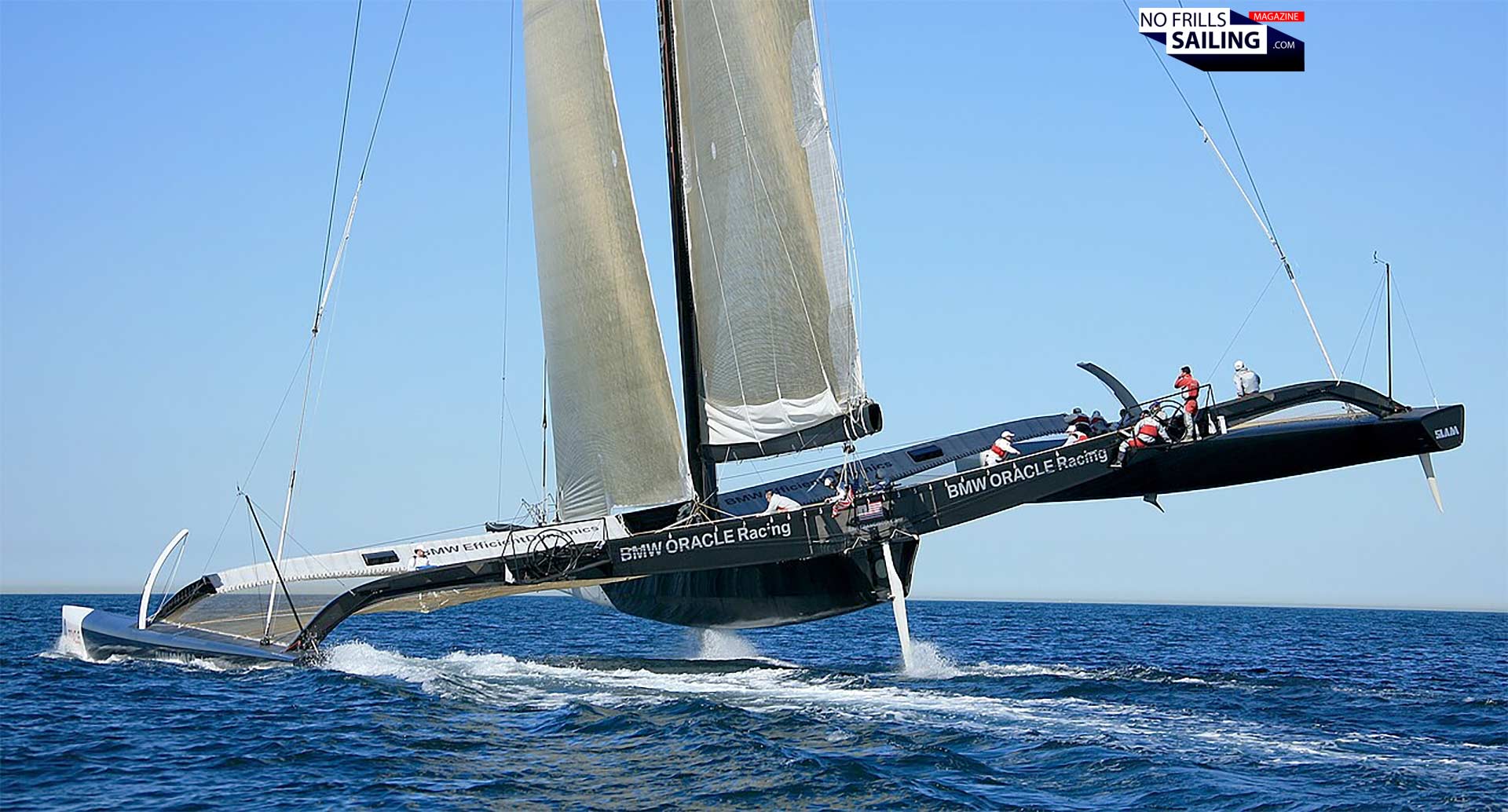
Lars Reisberg | NO FRILLS SAILING: „VPLP soon became a benchmark design bureau with a very distinct style and signature: What would you say characterizes a VPLP-design, despite maybe different boats and clients you worked for?“
Vincent Lauriot-Prevost: „Right from the start we worked with skippers like Kersauson, Le Cam, Arthaud or Bourgnon back then in the Eigthties till mid Nineties. These were almost all singlehanded projects. The nature of those projects implies deep exchanges on all the specificities of the design brief. We worked with a method we called the „tailormade mode“. Developing quite unique listening skills to being able to translate the feelings, wishes and visions of these sailors into design options and trends. This was critical. After this period of learning, we transferred this approach from racing boats to others projects, from cruising production boats to one off yachts. As VPLP had started in the early decades working mainly on multihulls, we also incorporated our quest for performance to offshore monohulls. With the then growing of IMOCA class to nowadays modern foiling vessels with similar speed than the old Orma 60 trimaran class. A quite remarkable journey.“
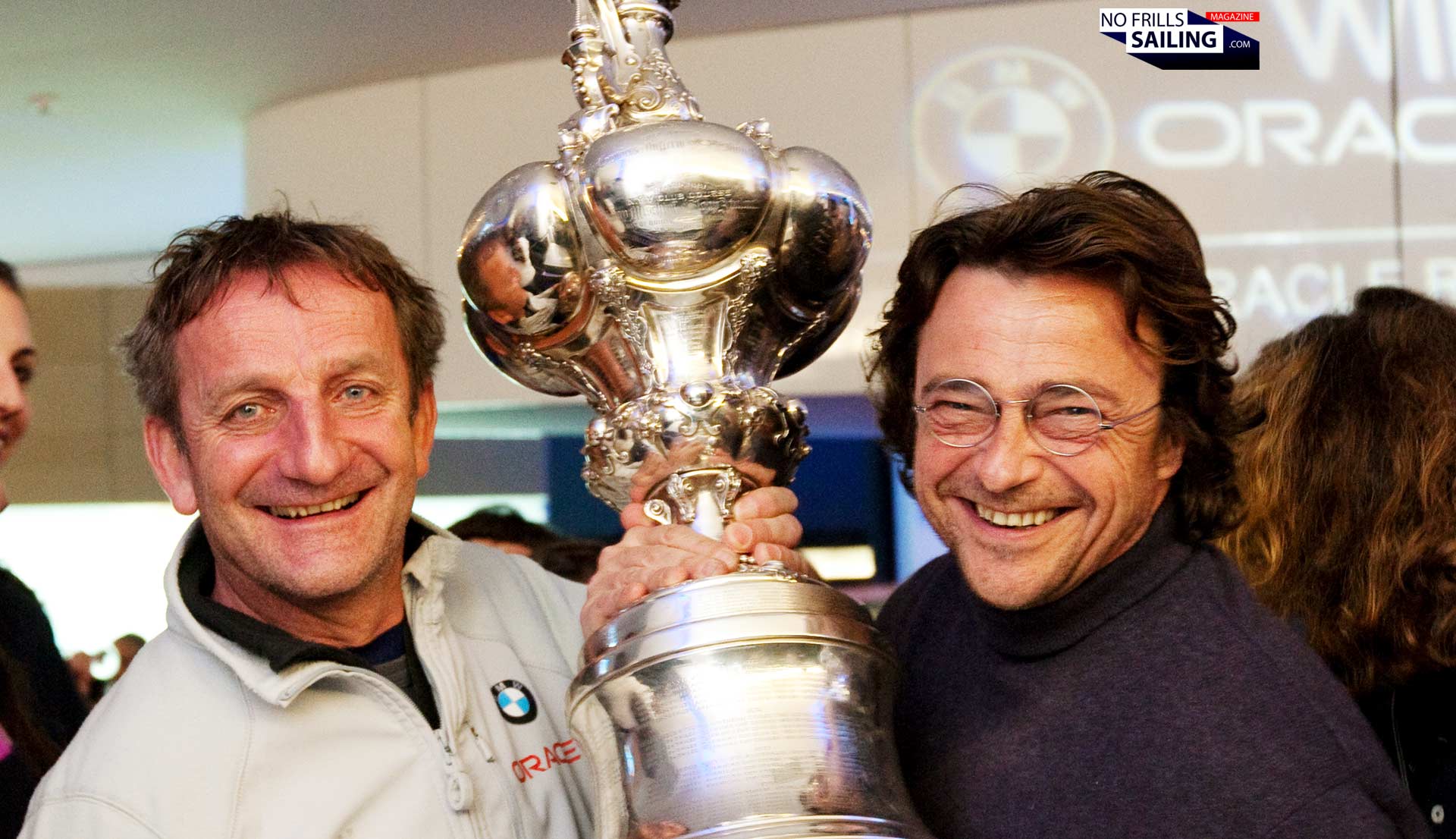
Lars Reisberg | NO FRILLS SAILING: „So it´s the quest for performance, I see. What must a client bring, offer or ask for, so that VPLP takes over the project – and vice-versa, did you reject projects and why?“
Vincent Lauriot-Prevost: „Well, a prospect client must show that he is more than a dreamer. I mean, nothing against dreaming, sure. But we were looking for clients who had a real project in mind. Clients who are ready to move forward, to transform his dreams and ideas into reality in a pragmatic way. A good project is always a project that can and will be built. One where both parties are happy with the final realisation. We did indeed reject projects when we felt that the phase „from dream to reality“ didn’t appear.“
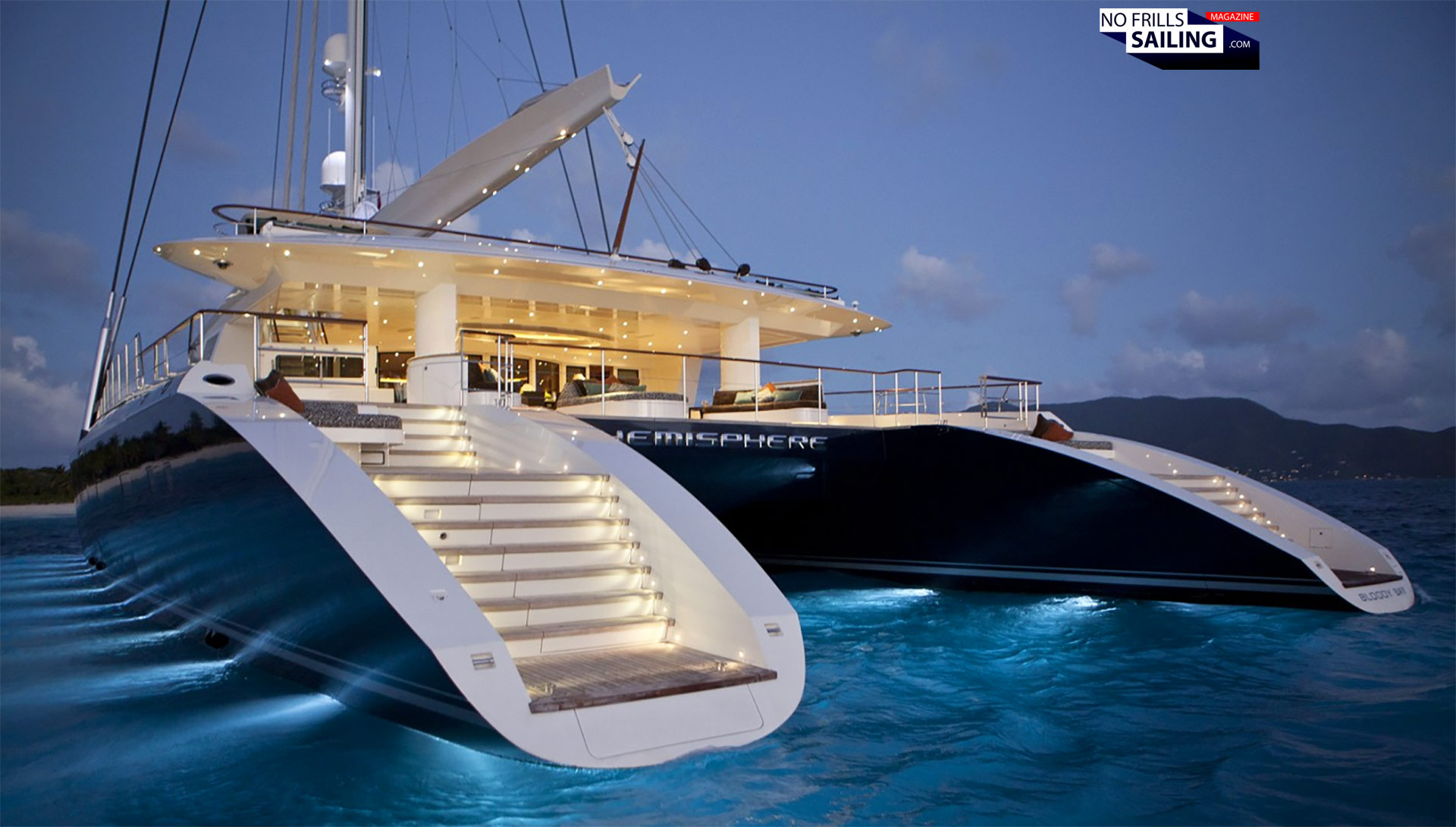
Lars Reisberg | NO FRILLS SAILING: „Speaking of your projects, Vincent, looking back: What are your personal Top 5 boats you´ve ever designed? Or: What are the most important VPLP-designs? Which boat will be associated to you in, let´s say, 50 years?“
Vincent Lauriot-Prevost: „That is a pretty tough question, Lars! I shall maybe start with a 1983 design, a boat for Gerard Lambert. This was the real starter that got VPLP going. In 1990 our PIERRE 1ER was the first big success for us as Florence Arthaud won the Route du Rhum with her. Of course, L´HYDROPTERE canot be missed in this list: With this project we confirmed that the capacity of collaborating and sharing ideas with Dassault, Airbus and aerospatiale engineers was essential to open our minds and move forward. Then, GROUPAMA 3, the first multihull designed for the famous Jules Vernes Trophy desverves a mention. She was a very forward-looking design where applying technology made the trick, not the sole increasing of sheer size. This boat won two Jules Verne trophies and three Route du Rhums: Even today she is the reference for the new Ultim Class. More recently, in 2010, the BMW Oracle winner of the 34th Americas Cup was our design. Three years of development with the most skillful naval engineers of all topics set new standards as well. She experimented with success a 225 feet height rigid 2 elements wing mast, from which VPLP derived the concept for the wind assistance of merchantships.“
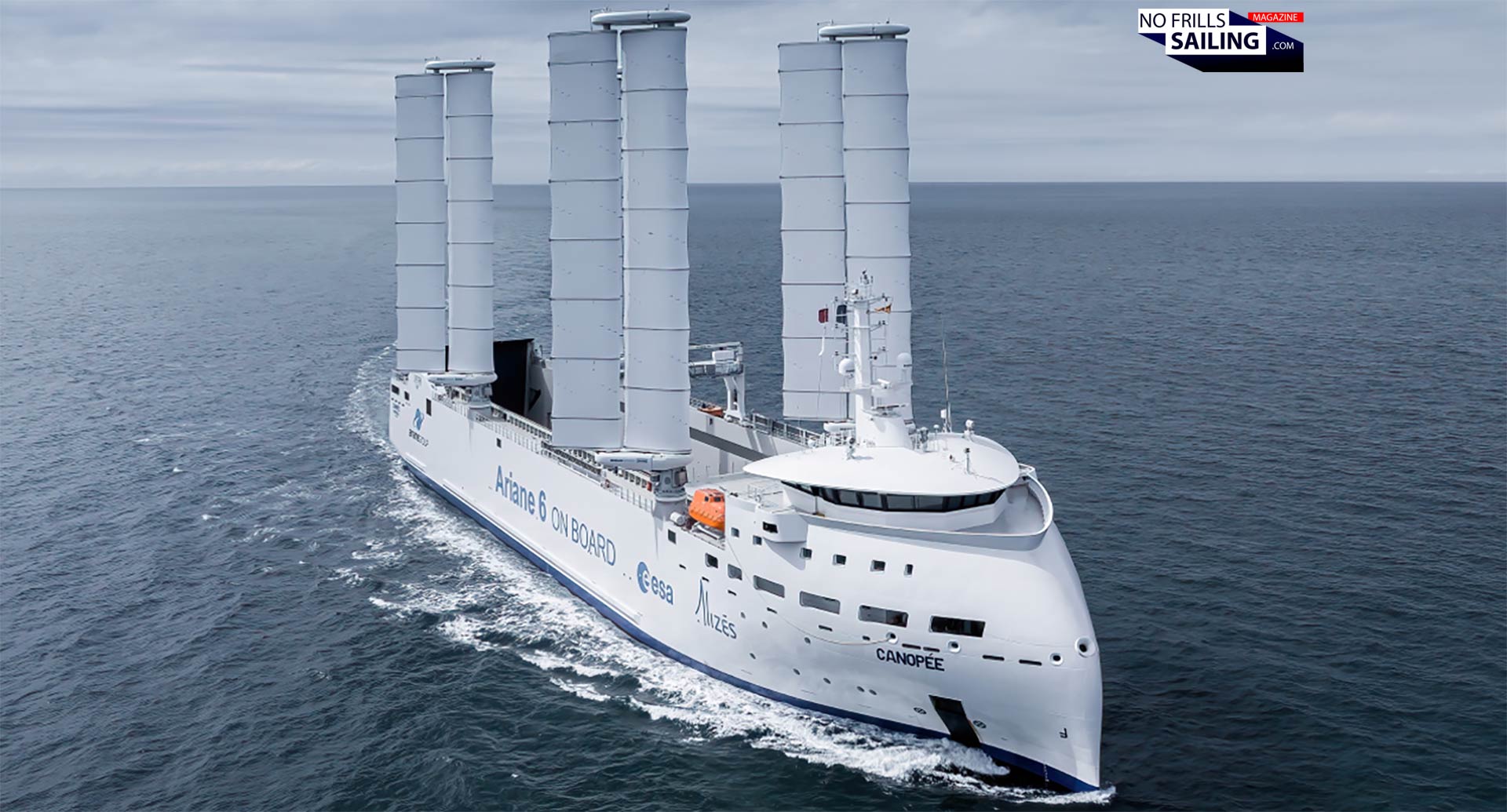
Lars Reisberg | NO FRILLS SAILING: „Amazing! That´s a list of racing boats solely. VPLP did also design some very successful cruising yachts, any most beloved or most important mentions in this respect?“
Vincent Lauriot-Prevost: „Yes, of course! The most important I think is clear, it was the first ever Lagoon cruising catamatan, a Lagoon 55. We designed it in 1986 and she became the blueprint for more than 4.000 Lagoons to follow. Actually, it was the first cruising cat built with the same methods as racing boats, applying the formula for a cruising cat: Comfortable, quick, light and simple. In 2011 HEMISPHERE became the then biggest cruising catamaran and opened up an attractive alternative to megayacht-monohulls. One of my favorites is also the CANOPÉE. The first ever merchantship designed by VPLP, introducing the assistance of four wing sails to reduce fuel consumption. She transports elements for the ARIANE rockets from Europe to Guyana, making seven transatlantic voyages per year. Amazing!“
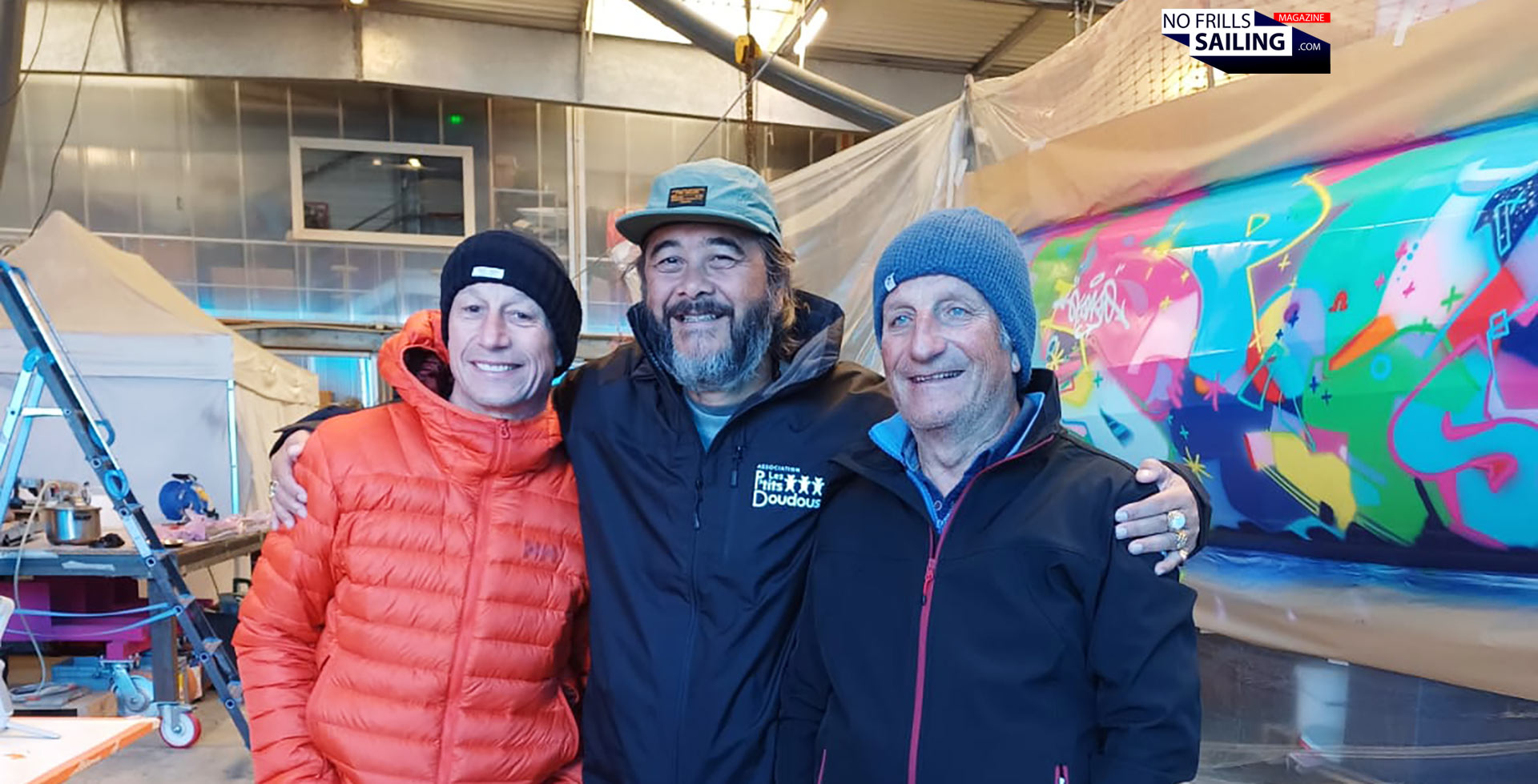
Lars Reisberg | NO FRILLS SAILING: „How do you spend the bulk of your time now? You enjoy a beautiful day out sailing or did you quit maritime activities for good?“
Vincent Lauriot-Prevost: „As you know, I am still in contact with the new VPLP-team of which my son Antoine is a part. We are sharing ideas and experience. Other than that, I enjoy my new priorities which are family, little children, friends and outdoor activities. I am often in the mountains during winter time and, of course, sailing in summer.“
Lars Reisberg | NO FRILLS SAILING: „Sounds good to me! Well deserved, Vincent. So, not unlike Marc Lombard Design Group, although luckily not because of similar tragic circumstances, VPLP contioues the work. How do you make sure that the bureau acts like you would have? What can we expect from VPLP in the future?“
Vincent Lauriot-Prevost: „Well, hopefully the new team will develop its own approach. The world has changed and the context is different than it was back then when we started. If they are still inspired by the same values, as performance is one of our values that we deeply share, they will be better than us. This is what I hope for and I am pretty sure that it will be that way.“
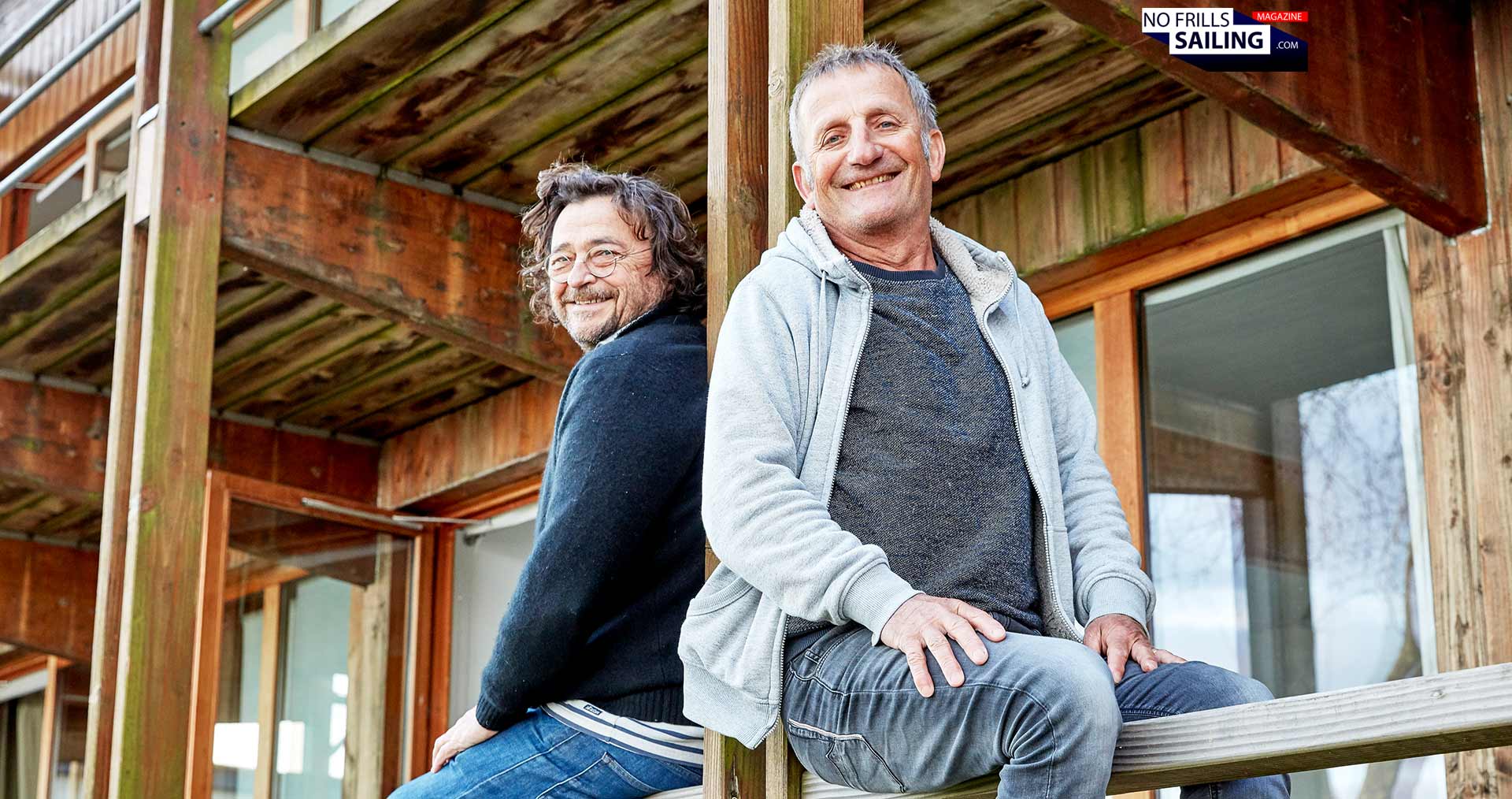
Lars Reisberg | NO FRILLS SAILING: „Vincent, I could talk forever with you. What an achievement! So, in the end, you have quit, but not quite. Retired, but still kind of active. Let´s imagine you had free reign, what would be a project that could make you come back? For which boat would Vincent temporarily return from his well-deserved retirement?“
Vincent Lauriot-Prevost: „A record breaker concept!“
Thanks so much, Vincent! I wish you a great time off grid, would love to see you around now and then. Thanks for sharing an insight into your amazing life.
Picture credits: Vincent Levy, Gilles Matin-Raget, DPPI, Thierry Martinez and VPLP, with kind permission
Also interesting, talking to naval architects and designers:
Unforgotten Marc Lombard, my first ever interview with him
Grand Seigneur of yacht design: Talking to German Frers
No one makes boats sexier than him – Javier Soto Acebal on designing the Solaris
